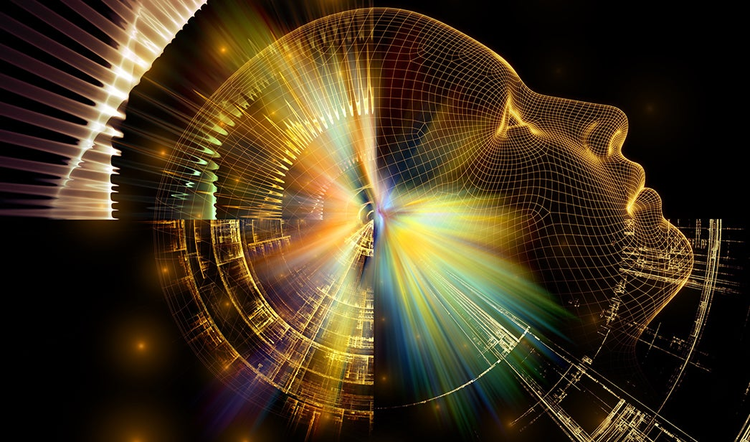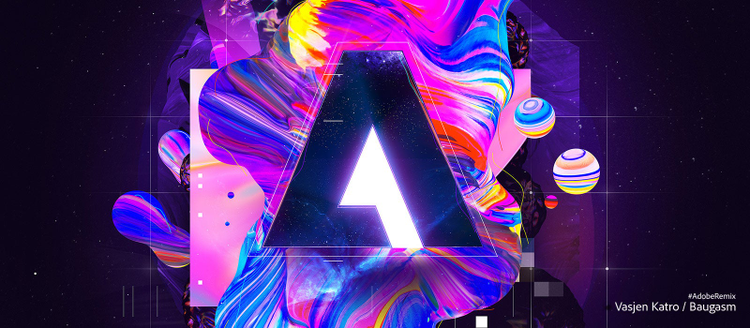Rise Of The AI Artist
As artists and creatives embrace artificial intelligence, new possibilities are presenting themselves in the forms of creative direction, visual design, and song creation.

Surrealist artist Salvador Dali once stated, “If someday I may die, though it is unlikely, I hope the people in the cafes will say, ‘Dali has died, but not entirely.’”
It was a prescient proclamation. Through AI technology, Dali, who died 30 years ago, has been resurrected by the Dali Museum in Florida, and Goodby, Silverstein & Partners. “Dali Lives,” created with artificial intelligence, features a virtual Dali who shares stories and thoughts on contemporary events. By pulling data and content from millions of frames of interviews with the artist, creators were able to bring to life one of the most colourful characters of the art world.
When marketers and technologists think about the applications for artificial intelligence, it’s common to think along the lines of data processing, GPS route-finding, and logistics efficiency. But as artists and creatives embrace the technology, new possibilities are presenting themselves in the forms of creative direction, visual design, and song creation.
Taking Direction
Shun Matsuzaka, digital creative director at McCann Worldgroup, is a pioneer in embracing AI-enabled creativity. There he developed an algorithm (AI-CD β;) that provides creative direction for creating TV commercials.
“I was very inspired by the way Netflix created the first drama series ‘House of Cards,’” he told CMO.com. “They accumulated their audience data and used it to create their own series.”
Matsuzaka realised he could use that method in the advertising industry. “My team and Iwatched 1,000 award-winning Japanese TV commercials, accumulated the data, and tagged them by hand based on the factors we thought makes for a good commercial,” he said.
They created 20 factors for the algorithm to take into consideration when determining the creative, such as context, manner, music, and tone. To use it, they enter key pieces of information pertaining to the client’s brief, such as target audience, concept, and product status. Then–at the press of a button–AI-CD β gives direction based on the database.
Matsuzaka believes in “co-creation”–that AI can improve on human creativity.
“We created [the algorithm] to enhance our creativity, not replace it,” he said. “The more I use AI-CD β, the more I have time to think in-depth and to research. My creativity depends on my temper, or how well I slept last night, or any external factors that can reduce my creativity. The strength of technology is that they work 24/7. They don’t forget, and they cannot work without logic.”
Vasjen Katro, (aka Baugasm), a visual designer from Albania, took a spin at reinventing the Adobe logo for Adobe’s Remix programme. (CMO.com is owned by Adobe.) Wanting to showcase the contemporary possibilities offered by the company, Katro incorporated AI into his process.

Drawing inspiration from sci-fi movies and van Gogh paintings, Katro worked to leverage style transfer technology powered by Adobe Sensei. The AI and machine learning framework allows artists to apply the structure and detail of one image to the content of another, previously a long process.
As a result, Katro was able to quickly transfer the style of van Gogh brushstrokes to the organic textures he used to reimagine the Adobe logo. He then combined digital and organic media to finish his work in Adobe Creative Cloud tools.
“It’s been so exciting to watch how Katro approached the project,” said John Caponi, senior creative director at Adobe. “He really used style transfer technology as a creative inspiration—it was a collaborative process. Then he’d add his own polish and create in the way only he can.”
Now Katro is dreaming up more ways to use AI.
“I see it as really convenient, especially in helping with tedious tasks that I’m not happy doing,” he said. “So why not have an assistant helping me crop a photo or figure out layers? I see it as a tool to create things more easily and faster—less time spent on tedious tasks is more time spent on creating or designing.”
AI Arrangement
Stephen Phillips, the Australian founder of AI music startup Popgun and a lifelong musician, saw the rise in technology and wondered how it could be used to mimic and emulate music’s ability to elicit an emotional response.
While it’s still early days for Popgun, which will release its first products soon, the company has made significant advances when it comes to intersecting AI with musical creativity.
Popgun used deep learning to develop an artificial intelligence that can create original pop songs. “We think AI is going to be a huge paradigm shift in how we make software,” Phillips told CMO.com.
Initially, Popgun’s goal was for its AI “to learn to make music so well that we’d press a button and out would come a great song” that would make the Top 40, Phillips said.
“The more we evolved the technology, it was clear this tool was able to model creative ideas and able to model how to compose music, but that wasn’t enough,” he explained. “We can teach it if something is in key or out of key, that these are the correct notes to play in this scale, but we can’t teach it how to assess good from bad.”
That’s where human subjectivity comes into play, and why Phillips believes the biggest breakthrough with technology like Popgun isn’t going to be the replacement of creators and composers. Rather, AI will democratise creative endeavours like design and music composition, delivering new creative tools that will drive the transition from mass consumption to mass creation.
As Phillips said, “There’s a constant stream of ideas creators can harvest, and they can combine them in new ways.”